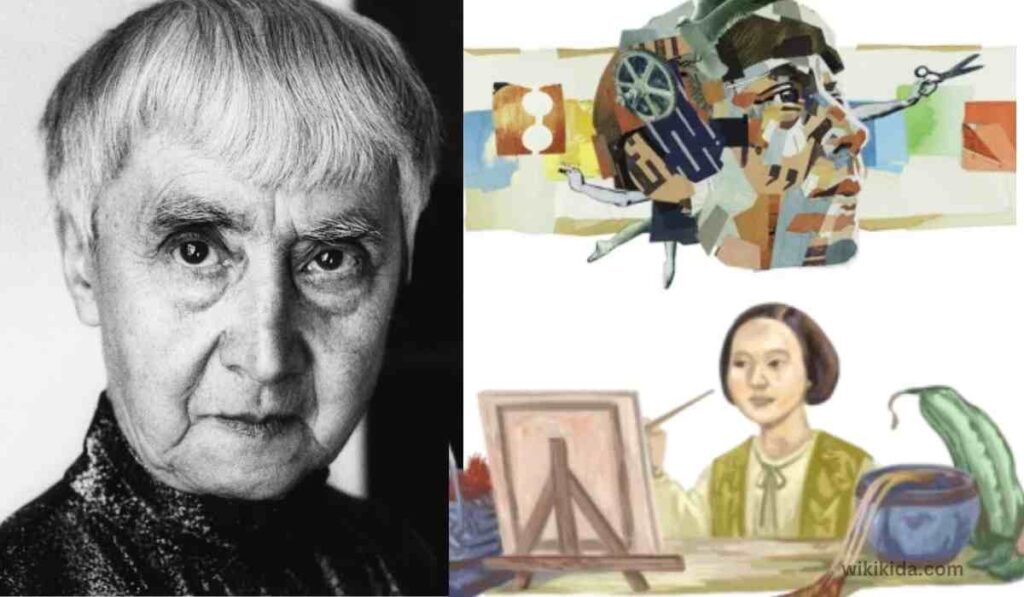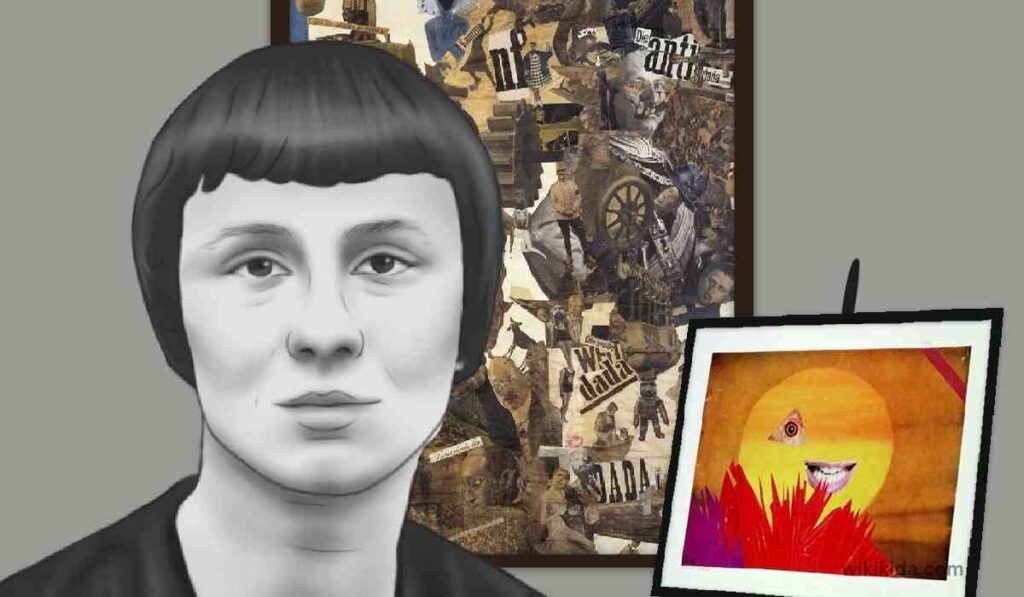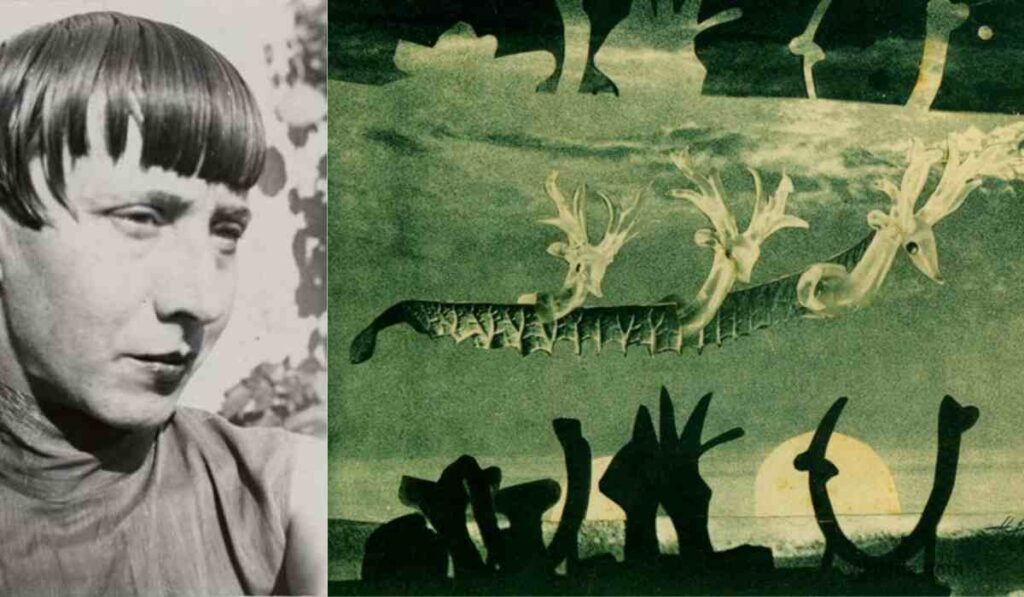Hello friends, all of you are welcome to my website wikikida.com, Today we will talk to you about the Biography of Hannah Hoch, we will know about her early life & career and how many awards she has received.
Hannah Hoch, a trailblazing German artist, left an indelible mark on the art world, particularly during the early 20th century. Her innovative photomontage works and defiance of societal norms set her apart as a pioneering figure in the Dada movement. Exploring her life, art, and legacy sheds light on her remarkable contributions.
Introduction
Hannah Hoch (November 1, 1889 – May 31, 1978) was a pioneering German Dada artist known for her contributions to photomontage and the avant-garde art movement. Her life was defined by creativity, curiosity, and a steadfast commitment to artistic expression.

Early Life & Career
Hannah Hoch was born in Gotha, Germany, on November 1, 1889. She showed an early interest in the arts and later studied at the School of Applied Arts in Berlin. Her artistic path was affected by the early twentieth-century socio-political climate, especially women’s rights groups and the radical concepts of the Dada movement.
Höch’s career was distinguished by her forward-thinking approach to art, particularly her pioneering work in photomontage. She was the only female member of the prominent Berlin Dada movement and played a key part in it.
Her photomontages questioned traditional artistic rules by combining disparate components in sarcastic and thought-provoking ways. Höch studied subjects such as gender, identity, and society as an artist.
Her work was a strong statement on women’s changing roles and expectations in the early twentieth century. Her revolutionary work is still recognized for its important impact on modern art and feminism.
Personal life and relationships
Höch’s affair with Raoul Hausmann has been described as “stormy” by art historian Maria Makela, and the major cause of their squabbles—some of which resulted in violence—has been identified as Hausmann’s refusal to leave his wife. He got to the point where he fantasized about killing Höch.
Hausmann derided Höch not only for her desire to marry him, which he termed as a “Bourgeois” propensity, but also for her artistic beliefs.
Höch was inspired by Hausmann’s hypocritical stance on women’s freedom to create “a caustic short story” titled “The Painter” in 1920, about “an artist who is thrown into an intense spiritual crisis when his wife asks him to do the dishes.” Hausmann constantly emphasized that the only way Höch could achieve her full potential as a woman was to marry.
Höch’s seven-year romance with Raoul Hausmann terminated in 1922. In 1926, she began a relationship with Mathilda (‘Til’) Brugman, a Dutch writer and linguist whom Höch met through mutual acquaintances Kurt and Helma Schwitters. Höch traveled to The Hague in the autumn of 1926 to live with Brugman, where they remained until 1929, when they relocated to Berlin.
Höch and Brugman were together for nine years, until 1935. They did not characterize their connection as lesbian, instead referring to it as a private love partnership. Höch began dating Kurt Matthies in 1935, and they were married from 1938 to 1944.
Legacy and Awards
Hannah Höch’s legacy is significant. She was a leader in avant-garde art, and her impact to photomontage as an artistic medium is immense. Her work influenced generations of artists, especially those working in the fields of feminism and the junction of art and social commentary.
Although she did not get many prizes during her lifetime, her impact on the art world is generally acknowledged. Her daring energy and brave commitment to challenge conventional standards have earned her a place in art history.

Biography of Hannah Höch : Book Pdf
Works
Höch was a forerunner of the photomontage art genre as well as the Dada movement. Many of her pieces satirized the mass culture beauty business of the period, which was gaining substantial traction in the media due to the rise of fashion and advertising photography. Many of her Dada-era political works associated women’s liberation with social and political revolution.
Her work depicts the turmoil and explosion of Berlin’s visual culture through the eyes of a woman. Her photomontages, in particular, frequently satirized the Weimar New Woman by combining pictures from contemporary periodicals. Her paintings from 1926 to 1935 frequently showed same-sex couples, and women were a recurring motif in her work from 1963 to 1973.
Her most frequently employed procedure was the fusion of masculine and female bodies. This fusion exists in order to offer a woman the attributed authority of a male while also blurring the limits of gender associated activities. In her collages, she also used traditionally feminine techniques such as embroidery and lace to underline gendered connotations.
Höch also spoke out strongly against racial discrimination. Schnitt mit dem Küchenmesser DADA durch die letzte Weimarer Bierbauchkulturepoche Deutschlands (“Cut with the Kitchen Knife Dada through the Last Weimar Beer-Belly Cultural Epoch in Germany”), a 1919 critique of Weimar Germany, is her most renowned work. In the Dada movement, images from newspapers of the day were blended and re-created to generate a new statement about life and art.
One of Höch’s most ambitious and politically charged projects, From an Ethnographic Museum (1929), consists of twenty photomontages that juxtapose images of European female bodies with images of African male bodies and masks from museum catalogues, resulting in collages that offer
“the visual culture of two vastly separate civilizations as interchangeable—the modish European flapper loses none of her stylishness in immediate proximity to African tribal objects; likewise, the nobility of the nobility of the nobility of Dada Puppens (Dada Dolls) were made by Hoch in 1916.
Hugo Ball, the Zurich-based originator of Dada, influenced these dolls. The doll’s clothes were inspired by Ball’s own geometric forms worn at landmark Dada performances.

Conclusion
Hannah Höch’s invaluable contributions to the art world continue to resonate today. Her fearless approach to art, challenging societal constructs, and trailblazing techniques have solidified her place as a revolutionary figure in art history.
FAQs
- Was Hannah Höch the only female artist in the Dada movement?No, there were other female artists associated with Dada, but Höch is one of the most prominent and recognized figures.
- What is the significance of photomontage in Höch’s work?Photomontage allowed Höch to create powerful visual narratives, challenging societal norms and commenting on the cultural and political climate of her time.
- How did Hannah Höch’s art influence contemporary artists?Her innovative use of photomontage and her challenges to traditional gender roles have inspired and influenced many artists in the contemporary art scene.
- Did Höch face backlash for her radical approach in art?Yes, her radical approach and socio-political commentary in her art often faced criticism and controversies.
- Where can one view Hannah Höch’s art today?Her works are exhibited in various art galleries and museums globally, offering audiences the opportunity to experience her innovative creations firsthand.
You Might Also Like :- 1. Jamie Foxx Biography : Relationship, Physical Stats, Personal Life, Career, Family








